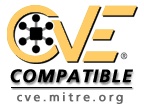Executive Summary
| Informations | |||
|---|---|---|---|
| Name | CVE-2018-19240 | First vendor Publication | 2018-12-20 |
| Vendor | Cve | Last vendor Modification | 2024-11-21 |
Security-Database Scoring CVSS v3
| Cvss vector : CVSS:3.1/AV:N/AC:L/PR:N/UI:N/S:U/C:H/I:H/A:H | |||
|---|---|---|---|
| Overall CVSS Score | 9.8 | ||
| Base Score | 9.8 | Environmental Score | 9.8 |
| impact SubScore | 5.9 | Temporal Score | 9.8 |
| Exploitabality Sub Score | 3.9 | ||
| Attack Vector | Network | Attack Complexity | Low |
| Privileges Required | None | User Interaction | None |
| Scope | Unchanged | Confidentiality Impact | High |
| Integrity Impact | High | Availability Impact | High |
| Calculate full CVSS 3.0 Vectors scores | |||
Security-Database Scoring CVSS v2
| Cvss vector : (AV:N/AC:L/Au:N/C:P/I:P/A:P) | |||
|---|---|---|---|
| Cvss Base Score | 7.5 | Attack Range | Network |
| Cvss Impact Score | 6.4 | Attack Complexity | Low |
| Cvss Expoit Score | 10 | Authentication | None Required |
| Calculate full CVSS 2.0 Vectors scores | |||
Detail
| Buffer overflow in network.cgi on TRENDnet TV-IP110WN V1.2.2 build 68, V1.2.2.65, and V1.2.2 build 64 and TV-IP121WN V1.2.2 build 28 devices allows attackers to hijack the control flow to any attacker-specified location by crafting a POST request payload (without authentication). |
Original Source
| Url : http://cve.mitre.org/cgi-bin/cvename.cgi?name=CVE-2018-19240 |
CWE : Common Weakness Enumeration
| % | Id | Name |
|---|---|---|
| 100 % | CWE-119 | Failure to Constrain Operations within the Bounds of a Memory Buffer |
CPE : Common Platform Enumeration
| Type | Description | Count |
|---|---|---|
| Os | 3 | |
| Os | 1 |
Sources (Detail)
| Source | Url |
|---|
Alert History
| Date | Informations |
|---|---|
| 2024-11-28 13:17:05 |
|
| 2020-05-23 01:11:51 |
|
| 2019-01-15 00:18:54 |
|
| 2018-12-21 05:18:15 |
|







